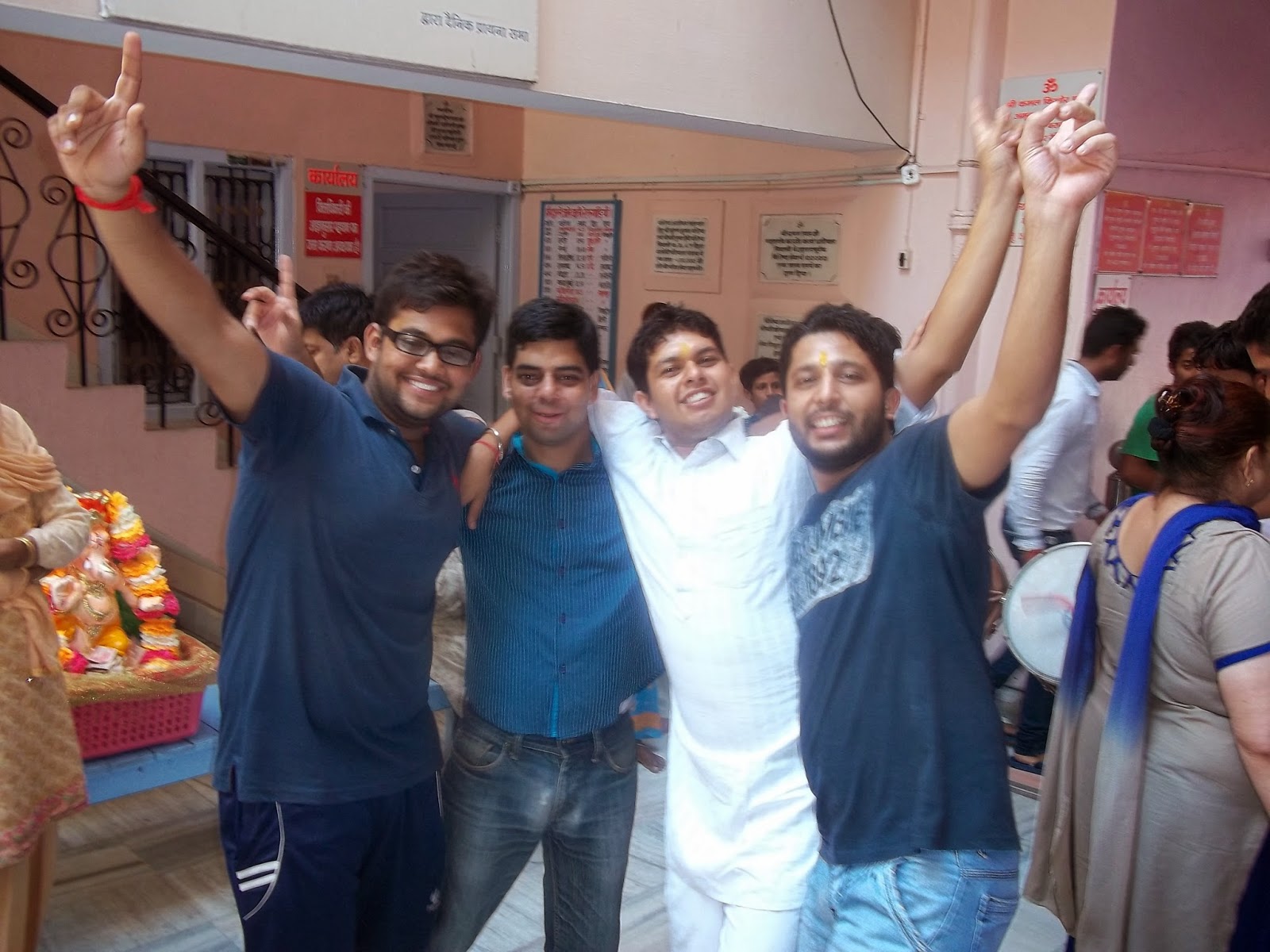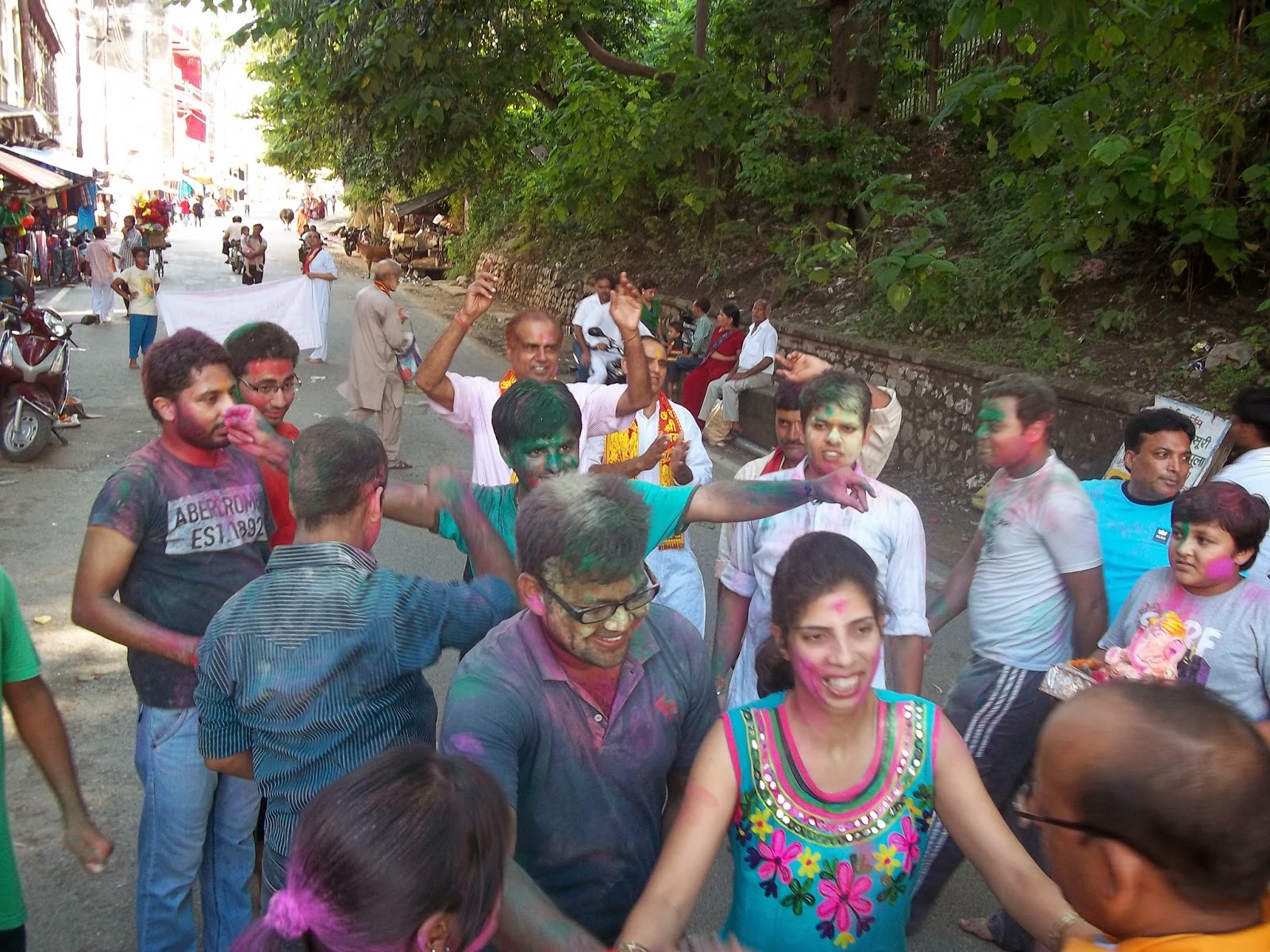9.09.2014
Ganesh Visarjan at Haridwar under the guidance of Shri Pawan Sharma Ji
Ganesh Chaturthi also known as chintamani Chaturthi is celebrated as the Birth Anniversary of Lord Ganesh, the God of Wisdom and Prosperity of Hindu mythology. Approximately 600 idols of Ganesh are commissioned for Ganesh Chaturthi in haridwar alone. And in Mumbai we can multiply ten times.
 The idol of Ganesh is installed at homes and temples and worshipped for ten days. The houses are cleaned up before the idol of Ganesh is installed. The idol is brought home with face covered with a saffron cloth amidst chanting of shlokas.Ganesh Visarjan is the culmination of the Ganesh Chaturthi Festival which celebrates the birthday of elephant-headed god Ganesh. Ganesha immerse holy idols in the , Ganga accompanied by drum beats, devotional songs and dancing.While celebrated all over India, it is most elaborate in western and southern India. Outside India, it is celebrated widely in Nepal and by Hindus in the United States, Canada and Fiji.
The idol of Ganesh is installed at homes and temples and worshipped for ten days. The houses are cleaned up before the idol of Ganesh is installed. The idol is brought home with face covered with a saffron cloth amidst chanting of shlokas.Ganesh Visarjan is the culmination of the Ganesh Chaturthi Festival which celebrates the birthday of elephant-headed god Ganesh. Ganesha immerse holy idols in the , Ganga accompanied by drum beats, devotional songs and dancing.While celebrated all over India, it is most elaborate in western and southern India. Outside India, it is celebrated widely in Nepal and by Hindus in the United States, Canada and Fiji.We the people of Amritsar who are connected to Lord Ganesha 400 YEARS OLD TEMPLE in Logarh Gate also participated in visarjan under the Guidance of shri Pandit Pawan Kumar Sharma in Haridwar every year for taking the blessing of lord upmapati son with all the Santana vidi here is some picture and movies which we took here.
We went to prarthana sabha in haridwar and first of all; loed ganesha ji sit on his seat before visarjan and under the guidence of Shri Pandit Pawan kumar Sharma ji Brahm Bhoj Was done daily on 1:00 Pm at afternoon from 5 /9/2014 . Brahm (for Brahmin) bhoj (for feast) is a unique ritual of feeding Brahmins. It is considered auspicious and is practiced on occasions of , various poojas.
 Brahmins are supposed to be the uppermost caste and associated with the performance of all the Vedic rituals. The basic idea behind Brahm-bhoj is to get their blessings. The family members usually participate in serving the Brahmins.
Brahmins are supposed to be the uppermost caste and associated with the performance of all the Vedic rituals. The basic idea behind Brahm-bhoj is to get their blessings. The family members usually participate in serving the Brahmins.  |
| Brahm-bhoj |




in short , The festival is also the time for cultural activities like singing and dancing performances, and use of Gulal is common as common in the festival of holy
used to get the taste of fantastic dhol dhamaka music and one used to start dancing automatically.
and the NCR have this festival as part of their annual calendar of festivals.



.jpg)

.jpg)




























..jpg)
..jpg)
..jpg)
..jpg)
..jpg)

.jpg)
..jpg)
..jpg)